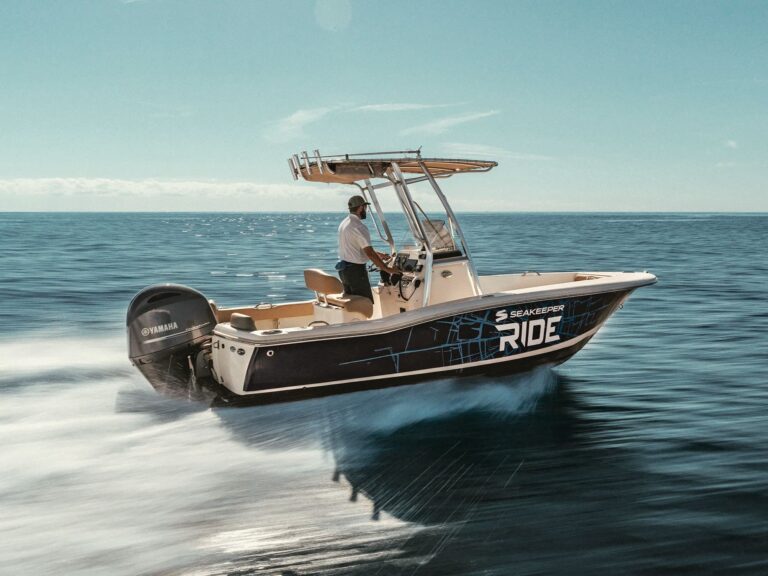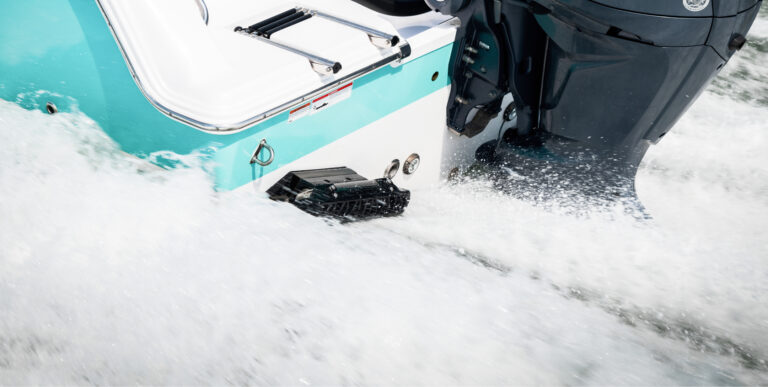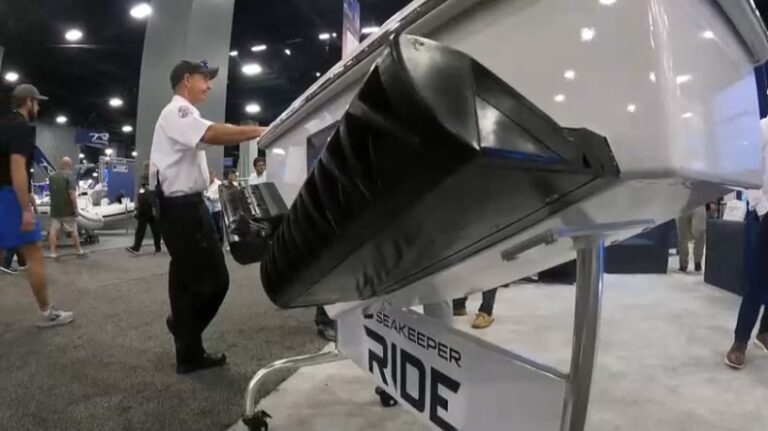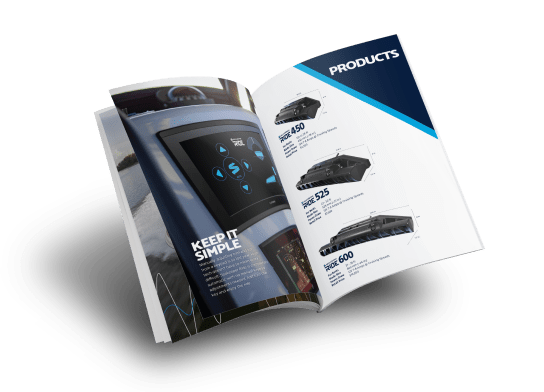Seakeeper’s New System Targets Pitch
The Seakeeper Ride, which minimizes roll and pitch, is available in three introductory models for boats to 35 feet
Publisher: tradeonlytoday.com
Original Article: https://www.tradeonlytoday.com/post-type-feature/seakeepers-new-system-targets-pitch
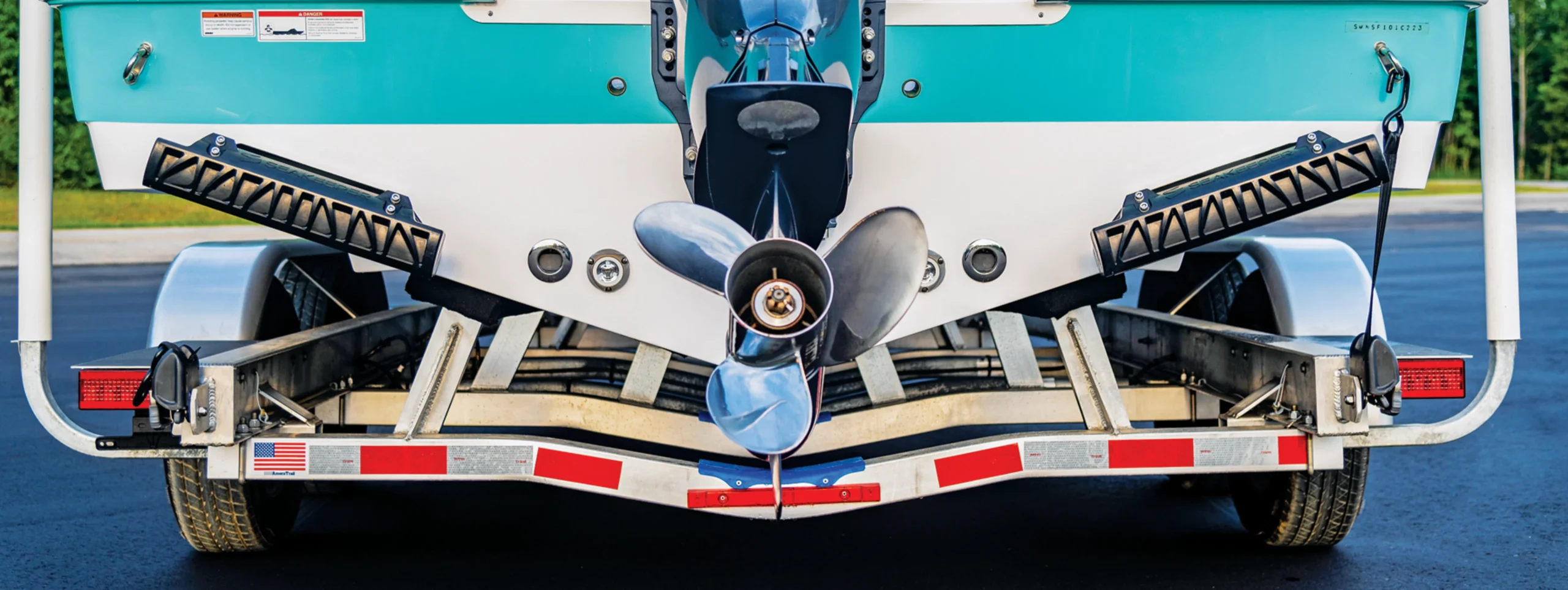
Seakeepeer, whose gyroscopic stabilizers set the marine industry standard for eliminating as much as 95 percent of a boat’s roll, is now turning its attention to eliminating pitch with the introduction of the Seakeeper Ride system.
The Seakeeper Ride is nearly two decades in the making. The company, founded in 2003, introduced its prototype gyro stabilizer in 2006 to reduce roll aboard a 43-foot Viking. By 2008, the M7000 made its debut as a production model, and Azimut Yachts signed Seakeeper’s first production builder contract. There were five Seakeeper models available to reduce roll as of 2014, with more to come. In 2020, the Seakeeper 1 brought stabilization to boats as small as 23 feet; today, 10 models are in the product line, for boats from 23 feet to more than 100 feet.
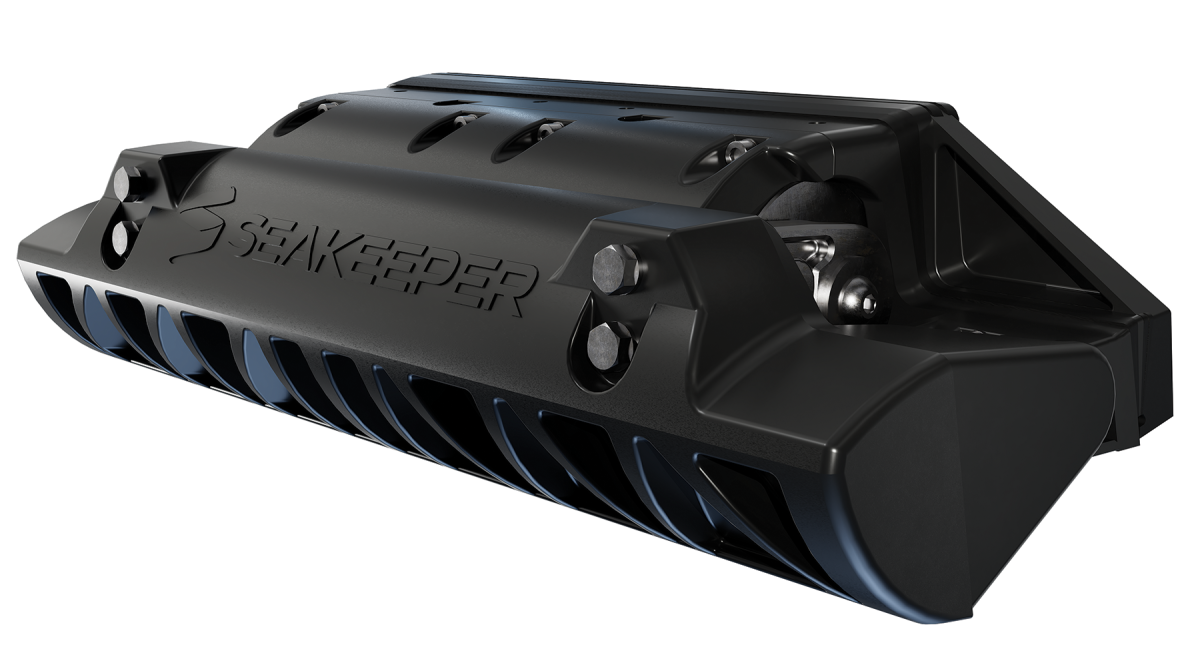
Now comes the Seakeeper Ride, which the company says eliminates up to 70 percent of underway roll and pitch. Three models are currently available: the Ride 450 for boats to 26 feet, Ride 525 for boats from 27 to 30 feet, and Ride 600 for boats from 31 to 35 feet.
Several Builders Have Signed On
Whereas aircraft and spacecraft use Attitude Control Systems to control pitch, roll and yaw underway, Seakeeper is calling the Ride a Vessel Attitude Control System. It can work separately from, or in conjunction with, a traditional Seakeeper gyro stabilizer. According to the company, the addition of a Seakeeper enhances the underway performance of the Ride system by an additional 10 percent to 20 percent.
Several production boatbuilders have already signed on to offer the new system. Chris-Craft is making the Seakeeper Ride available on 10 of its models. Scout Boats has it on three, and Sportsman Boats has it on four, with another four coming soon.
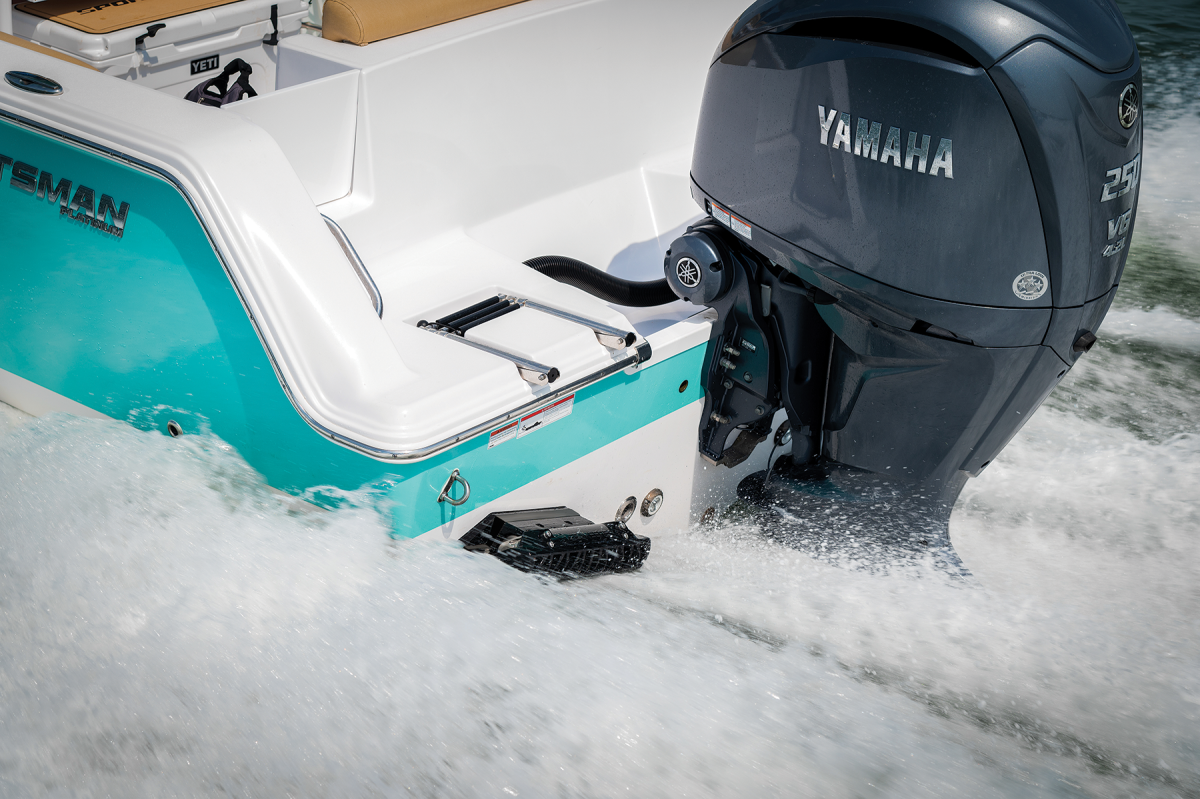
Seakeeper CEO Andrew Semprevivo demonstrated the Seakeeper Ride’s capabilities for Soundings Trade Only aboard a Sportsman 322 in 3- to 5-foot seas off Atlantic City, N.J. With a dark sky along the shore and the threat of a downpour looming, he said, “Let’s try this with the system off first.”
We slammed into the short-period troughs.
“Now, let’s try with it on,” he said, pressing a button at the helm.
Immediately, the bow rise when climbing on plane was significantly reduced. Where the Sportsman had previously labored to climb out of the hole, it was now a Boeing 747 lifting smoothly from the tarmac. The bow stayed fixed on the horizon, the rolling reduced greatly, and the ride became much more comfortable.
“We launched a couple development attempts at this system in the past that I thought were better than anything on the market, but it wasn’t, ‘Hit the button, holy sh**, Seakeeper, wow,’ which is what you feel when you hit the gyro,” Semprevivo says. “If we were going to come out with a second product, it would have to offer that.”
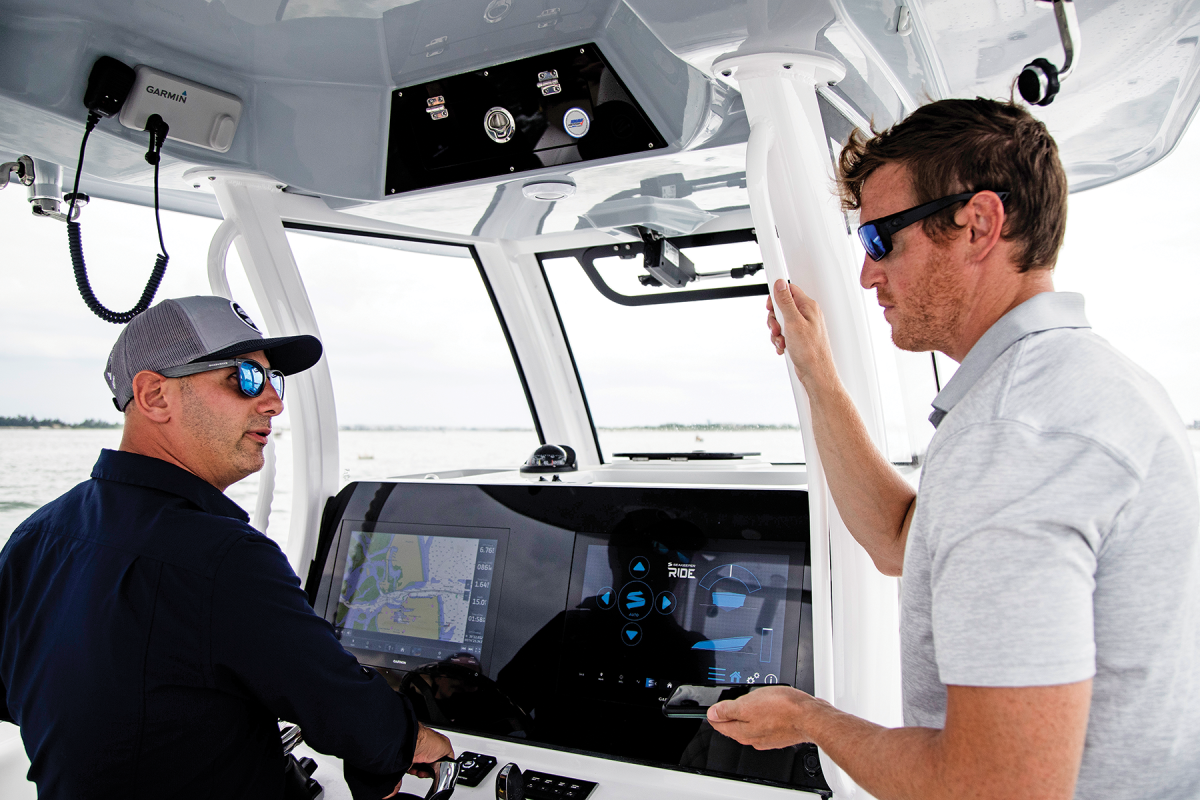
From the helm, the system can make a boat owner feel like offshore racing legend Don Aronow. (That’s how I felt, at least.) According to an on-board monitoring system that produced real-time measurements, the system was actively eliminating roll by 35 percent and pitch by 52 percent. The boat felt genuinely safer with the system engaged.
Switching to a smaller, 21-foot Sportsman beneath the now full-on angry clouds, in continually building seas, the Seakeepeer Ride worked just as well. While rolling smoothly over the swells, I was reminded of something Semprevivo had said years earlier. One of his team members had jokingly asked when the company would have a stabilizer for her 15-foot Boston Whaler. With a completely serious tone, he had replied something to the effect of, “Someday, we’re going to impact and change boating for everyone.”
The Seakeeper Ride may just be the product that finally makes that vision a reality. One location where Semprevivo sees it making a big difference aboard smaller boats — especially with new skippers at the helm — is inlets. “Where so many new boaters get themselves in trouble is when running through an inlet,” Semprevivo says. “You’ll see them stuff the bow and put themselves in danger.” The Seakeeper Ride minimizes the problems that those boaters face when heading into and out of an inlet.
Seakeeper does not expect installation of the Ride to affect speed or fuel efficiency. While all transom-mounted control systems create drag in the production of lift, to adjust the running angle or list of the boat, the company says that the drag produced is proportional to deployment depth and time. Because the Seakeeper Ride blade deploys and retracts in milliseconds, adjusting the boat’s attitude only when needed, the drag duration is reduced compared to traditional, transom-mounted systems.
In some cases, the company says, boats may see an increase in speed and fuel efficiency with the Seakeeper Ride, because of pitch reduction and the resulting decrease in hull resistance.
DIY-Ready Installs
Targeting that smaller-boat segment also means making installation as easy as possible, because many of those owners handle maintenance and aftermarket installations themselves. To that end, the Seakeeper Ride is designed to be installed by DIY boaters once units launch for personal installation outside of the OEM system, likely in late 2023.
Maintenance requirements are also expected to be minimal. The actuators on each controller have zincs that need to be periodically inspected (about once every three months) and replaced when about half of the anode has worn down. The company suggests a visual inspection and freshwater rinse after each use, or each time the boat is removed from a saltwater environment. Bottom paint is recommended for controllers on systems that will be submerged for more than two weeks at a time.
The electrical requirements to install the system include an NMEA-compatible GPS with an ethernet port, and a 12-volt DC power source with the capacity to deliver 10 amps. The system is designed to be compatible with certain multifunction displays from Garmin, Raymarine, Simrad, Navico, Lowrance, B&G and Furuno.
Semprevivo says the Ride system can be mounted to a transom with an adhesive such as Plexus. The boat will only need one hole for the power supply in the center of the device. From there, owners need to run power-supply wiring, mount a small module — the brain that controls the system and learns the boat’s handling preferences — and then route everything to the multifunction display.
Outside of some limited setting preferences, such as preferred amount of bow rise, there is no need to configure the system and no need to set up the parameters of the boat. The company doesn’t want users to think about the system at all. In fact, the Seakeeper team doesn’t even want the physical on/off button to be on most boats. They want the system to remain on and forgotten about, adjusted solely by the system’s brain.
“What you feel is a transom-mounted device that looks very different than a traditional tab or interceptor, but in the same way as a trim tab, it creates lift at the transom, which allows you to control running angle or list angle of the boat. That’s the easy part,” Semprevivo says. “The hard part is how fast you have to move it to control the motions of the boat that happen underway. You have yaw, you have roll, you have pitch, and you have different headings. We’re making 100 adjustments a second, which enables pitch and roll reductions of 70 percent at speed.”
Development Details and Pricing
At full deployment, the system’s blades dig an inch into the water, but the majority of the time, the blades are only deployed 0.2 of an inch. It’s a tough concept for most boat buyers to grasp, that at 35 knots in rough seas, this slight change to a boat’s running surface can make such a difference.
Where the real magic happens is in the software, which not only can react to the sea’s complicated forces, but also can instantaneously apply a counterforce to the Ride’s blades. Seakeeper’s director of engineering, Mike Gallagher, is among those credited with developing the product to the Seakeeper standard from a small location in New Jersey that focused exclusively on the Ride system. “Andrew really created a culture for us that felt like a scrappy startup,” Gallagher says.
The Seakeeper Ride 450, with a blade length of 450mm for boats smaller than 26 feet, has a suggested retail price of $4,500. The Ride 525 will retail for $7,500, and the Ride 600 will sell for $10,500.Larger units are expected in the future.
Seakeeper says that for the Ride’s debut, the system will only be available for single- and twin-engine monohulls without stepped hulls. Stepped hulls are on the table for future Seakeeper Ride models.
